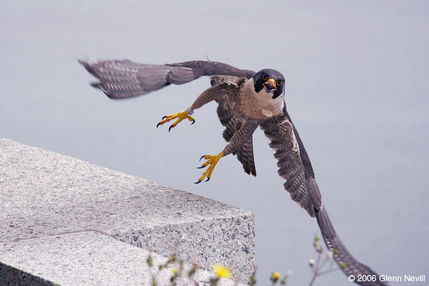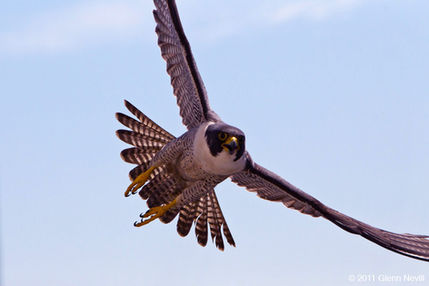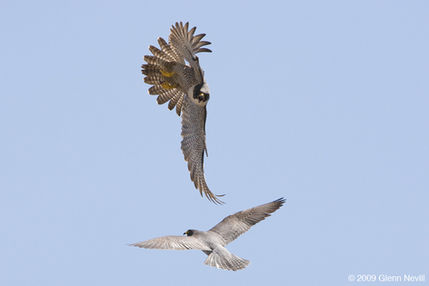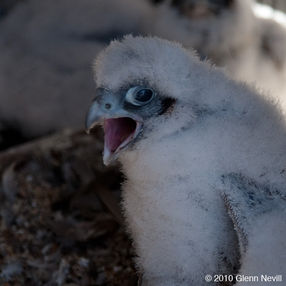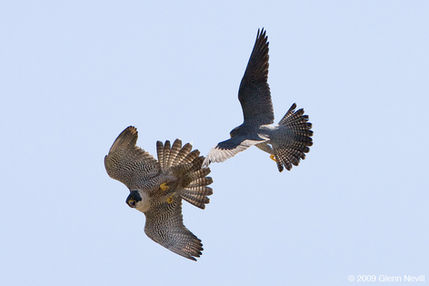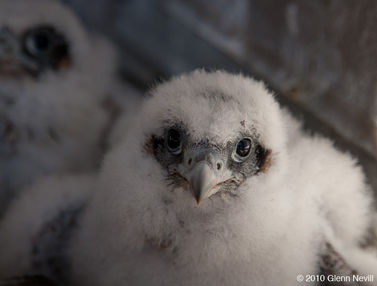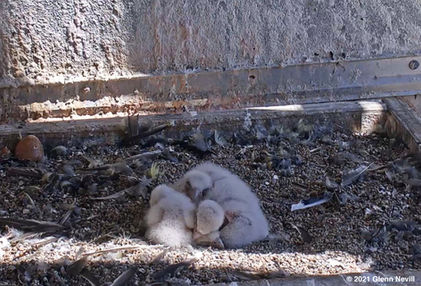PEREGRINE Falcons
Spring is in the air and birds abound all around us! Our annual family tradition is to watch a live cam of the local peregrine falcon nest. Once eggs are layed, they hatch in 29-32 days. Thanks to our talented friend Glenn Nevill for sharing his stunning photographs with us!
FACTS
-
Reaching speeds of over 200 mph as they dive to catch their prey, peregrine falcons are the fastest creatures on the planet.
-
Peregrine falcons live mostly in open country but are adaptable and can thrive in urban areas surrounded by humans.
-
The name ‘peregrine’ actually means ‘wanderer’ or ‘pilgrim.' When not nesting, they are usually solitary and may travel widely.
-
A peregrine falcon's wings and tail are bluish-gray, and its back and head are a darker brown. Its cheeks sometimes have a dark brown tear-shaped mark. The bird's chin and neck are white, and each eye is surrounded by a yellow circle. Dark brown bars across the wings are also visible when its wings are open. Its strong, sharp yellow talons allow it to capture other birds, even while in flight.
-
Their binocular vision is eight times better than that of a human. They can see prey from more than 10,000' away.
-
They have a third eyelid, which spreads tears and clears debris away to protect their eyes without obstructing their vision.
-
They hunt mainly at dawn and dusk, feeding primarily on birds such as pigeons and gulls that they have capture in flight. They eat rabbits, bats, fish and rodents.
-
To hunt, they chase or dive on their prey from a great height in a movement called a ‘stoop’. With to their speed, peregrine falcons stun their prey with a blow and they catch it as it falls.
-
Peregrine falcon pairs mate for life and return to their nest in the late winter.
-
Peregrines don't build nests. Instead, the female forms a scrape with her chest and legs in which to lay 3-4 eggs in March or April. The chicks typically hatch in 29-32 days. New chicks are called "eyases"! Check out their creamy-white down and very large feet!
-
Young falcons rely on their parents for food initially before fledging after around 39 days and becoming fully independent.
-
Its predators include Gyrfalcons, eagles, Great Horned owls, and other Peregrines.
Special thanks to Glenn Nevill for sharing his beautiful photographs with us.

